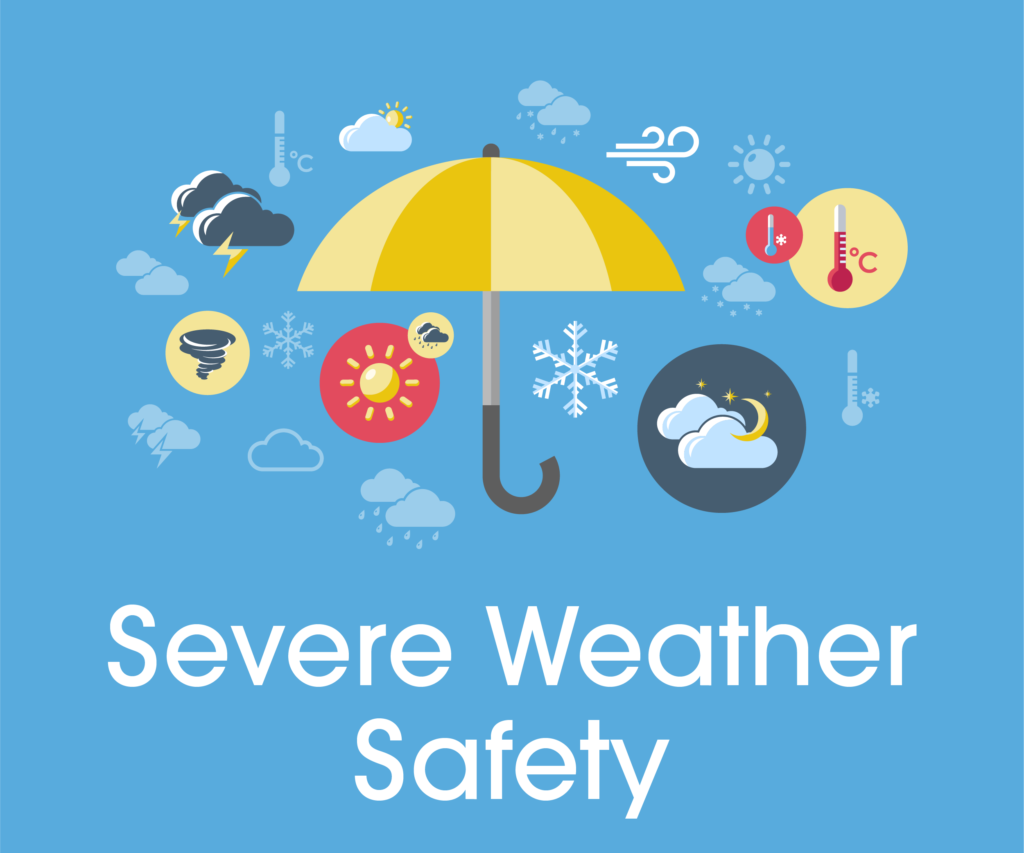Flood Safety Essentials: Protecting Yourself And Your Family During Severe Weather

Table of Contents
Creating a Flood Safety Plan
A comprehensive flood safety plan is your first line of defense against the dangers of flooding. This plan should address several key areas, ensuring you're prepared for any scenario.
Assess Your Risk
Determining your vulnerability to flooding is the first step in creating an effective flood safety plan. Understanding your risk level allows for targeted preventative measures and informed decision-making during a flood event.
- Check FEMA flood maps: The Federal Emergency Management Agency (FEMA) provides detailed flood maps for the entire United States. These maps identify areas at high risk of flooding, allowing you to assess your property's vulnerability. Knowing whether you live in a high-risk flood zone is critical.
- Consider past flood history: Research the history of flooding in your neighborhood. Local records, news archives, and conversations with neighbors can provide valuable insights into past flood events and their severity.
- Evaluate proximity to water sources: Analyze your home's proximity to rivers, streams, lakes, and other water bodies. The closer your home is to these sources, the greater your risk of experiencing flooding.
Develop an Evacuation Plan
Having a well-rehearsed evacuation plan is crucial, especially if you live in a high-risk flood zone. Practice your plan regularly with your family to ensure everyone knows what to do in an emergency.
- Identify multiple evacuation routes: Plan at least two different routes to escape your home in case one is blocked by floodwaters. Familiarize yourself with these routes and ensure they are easily accessible.
- Determine a safe meeting place: Choose a designated meeting point outside your flood zone where your family can regroup after evacuating. This should be a location easily accessible to everyone and identifiable in case of limited visibility.
- Pack an emergency kit: (See details below in "Assemble a Flood Emergency Kit"). Having a readily accessible emergency kit is paramount for survival during and after a flood event.
- Establish communication procedures: Develop a communication plan in case family members become separated during the evacuation. This could involve designating a contact person or using pre-arranged meeting points.
Assemble a Flood Emergency Kit
A well-stocked emergency kit is your lifeline during and after a flood. Ensure your kit contains enough supplies to sustain your family for at least 72 hours.
- Water: One gallon of water per person per day for several days is recommended.
- Non-perishable food: Stock up on easy-to-prepare, non-perishable food items that require minimal cooking or refrigeration.
- First-aid kit and medications: Include a comprehensive first-aid kit with essential supplies and any necessary prescription medications.
- Flashlight and extra batteries: A flashlight with extra batteries is crucial for navigating in darkness during and after the flood.
- Radio (hand-crank or battery-powered): A battery-powered or hand-crank radio allows you to stay informed about weather updates and emergency instructions.
- Important documents (in waterproof bags): Store essential documents, such as insurance policies, identification cards, and medical records, in waterproof bags to protect them from water damage.
Protecting Your Home Before a Flood
Taking preventative measures to protect your home can significantly reduce flood damage and improve your family's safety. Proactive flood protection is a vital part of your overall flood safety strategy.
Floodproofing Your Home
Floodproofing your home involves implementing measures to minimize the impact of floodwaters on your property.
- Elevate electrical appliances and furnace: Raising these appliances off the floor reduces the risk of water damage.
- Install flood barriers or sandbags: Sandbags and flood barriers can effectively prevent floodwaters from entering your home.
- Use waterproof sealant: Apply waterproof sealant around windows and doors to prevent water infiltration.
- Install backflow valves: Backflow valves prevent sewer backups from entering your home during a flood.
Preparing Your Property
Securing your property before a flood can prevent significant damage and loss.
- Move valuable items to upper floors: Relocate irreplaceable items and valuables to higher levels of your home.
- Secure outdoor furniture and equipment: Bring loose outdoor items inside or secure them to prevent them from being swept away.
- Clear gutters and drains: Ensure gutters and drains are clear to facilitate proper water drainage.
- Protect your vehicles: Park your vehicles on higher ground to prevent flood damage.
Responding to a Flood Warning
Understanding flood warnings and responding appropriately is critical for ensuring your safety and minimizing damage. Knowing the difference between a watch and a warning is essential.
Understanding Flood Warnings
A flood watch means flooding is possible, while a flood warning means flooding is imminent. Stay informed about weather forecasts and official warnings.
- Monitor weather reports closely: Pay close attention to weather forecasts and warnings issued by your local authorities.
- Pay attention to official flood warnings and evacuation orders: Heed all warnings and evacuation orders promptly. Don't wait until it's too late to evacuate.
- Be prepared to evacuate immediately: Have your evacuation plan in place and be ready to evacuate at a moment's notice.
During a Flood
Your safety is the top priority during a flood. Never attempt to drive or walk through floodwaters.
- Move to higher ground immediately: If instructed to evacuate, do so immediately and move to higher ground.
- Turn off utilities (gas, electricity): If it's safe to do so, turn off gas and electricity to prevent further damage.
- Stay away from floodwaters: Floodwaters are often contaminated and pose significant health risks.
- Avoid downed power lines: Downed power lines are extremely dangerous and should be avoided at all costs.
After a Flood
After the floodwaters recede, carefully assess the damage and seek professional help if needed.
- Check for structural damage: Before re-entering your home, carefully assess for structural damage.
- Avoid contact with floodwaters: Floodwaters can be contaminated, so avoid contact.
- Report damage to your insurance company: Contact your insurance company to report any damages.
- Contact local authorities for assistance: Contact local authorities for assistance with cleanup and recovery efforts.
Conclusion
Thorough preparation is key to effective flood safety. By implementing a comprehensive flood safety plan, taking preventative measures to protect your home, and responding appropriately to warnings, you can significantly reduce the risks associated with severe weather and flooding. Remember, proactive flood safety saves lives and protects your family. Don't wait until the next storm; take action today and create your comprehensive flood safety plan now! Investing in flood safety is an investment in your family's future.

Featured Posts
-
 A Fathers Resilience Jonathan Peretzs Year Of Loss And Renewed Hope
May 26, 2025
A Fathers Resilience Jonathan Peretzs Year Of Loss And Renewed Hope
May 26, 2025 -
 Naomi Campbells Potential Met Gala Absence The Anna Wintour Fallout Explained
May 26, 2025
Naomi Campbells Potential Met Gala Absence The Anna Wintour Fallout Explained
May 26, 2025 -
 Dr Terrors House Of Horrors Is It Worth The Fright A Detailed Look
May 26, 2025
Dr Terrors House Of Horrors Is It Worth The Fright A Detailed Look
May 26, 2025 -
 Jangan Lewatkan Jadwal Terbaru Moto Gp Inggris Di Sirkuit Silverstone
May 26, 2025
Jangan Lewatkan Jadwal Terbaru Moto Gp Inggris Di Sirkuit Silverstone
May 26, 2025 -
 Une Decision Judiciaire Qui A Change Le Cours De La Vie De Marine Le Pen
May 26, 2025
Une Decision Judiciaire Qui A Change Le Cours De La Vie De Marine Le Pen
May 26, 2025
